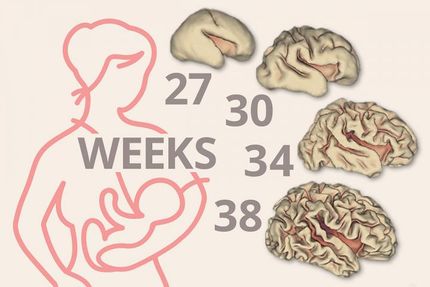Glyphosate in breast milk: Continue to breastfeed?
Published results on glyphosate in breast milk lead to intake levels in babies which are well below the health-based reference value
Advertisement
The parliamentary group Alliance 90 / The Greens (Bündnis 90 / Die Grünen) reported on 25 June 2015 that a laboratory had detected the active pesticide ingredient glyphosate in 16 samples of breast milk. The report called these findings "very concerning". The Federal Institute for Risk Assessment (BfR) and the National Breastfeeding Committee regard the measured values of up to 0.43 nanograms (ng) per millilitre (ml) as safe from a health point of view. The published levels would lead to glyphosate intake levels in newborn babies which are lower by a factor of over 4000 than the EU reference value defined as posing no health risk. Moreover, there are significant doubts regarding the methodology of the tests. Responding to telephone calls from worried mothers, the National Breastfeeding Committee and the BfR reassure th e public that breast milk continues to be the natural and hence best nutrition for infants. Mothers should not be put off and continue to breastfeed their children as before.
Breast milk is the best food for babies. It is easy to digest and composed in such a way that it meets the infant’s needs in terms of both nutrition and fluid intake in their first year of life. Babies who have been exclusively breastfed for four to six months have a significantly lower risk of infection, for example of the respiratory tract. Other illnesses which are less common in later life for children who have been breastfed are overweight and diabetes mellitus Type 2. For this reason, the National Breastfeeding Committee recommends that infants are exclusively breastfed until at least the beginning of their fifth month and that mothers continue to breastfeed as long as the mother and child feel comfortable, even after solid foods have been introduced.
According to the current state of scientific knowledge, glyphosate does not accumulate in fatty tissue due to its physical and chemical properties. Nor has an affinity with fatty tissue been observed in the available animal experiments. Similarly, the excretion of glyphosate in the milk of cows has been shown to be negligible.
In addition, there are doubts about the reliability of the used ELISA method in the analysis of breast milk. The ELISA tests known to the BfR have been validated for detecting glyphosate in water samples; their suitability for milk and other fatty matrices has not been demonstrated. There are a number of studies that give no indication of any accumulation of glyphosate in the organism. The BfR cannot glean from the available information whether the test was validated in advance for all studied matrices (i.e. breast milk and urine). Such validation is necessary for a meaningful statement, since the detection limits can be very different in different matrices. The published levels in the 16 breast milk samples were all within a relatively narrow range between 0.21 und 0.43 ng per ml. The most sensitive analytical method used for food monitoring has a detection limit of only 10 nanograms per millilitre. This means that the levels detected in breast milk mentioned in the report are clearly below this value and cannot be assessed without more precise statements on the analytical method used.
On the basis of the published glyphosate levels in breast milk, the BfR has calculated whether health-based reference values would be exceeded. Newborns have - with regard to their bodyweight - the highest fluid intake needs compared to older children: about 150 ml per kg of bodyweight per day. If the highest measured value is taken as a basis, this results in a daily glyphosate intake of 0.000065 mg per kg of bodyweight for an infant that is exclusively breastfed. For the intake of residues from foods, an acceptable daily intake (ADI) of 0.3 mg per kg of bodyweight has been derived in the EU; this is the value at which no health risks are to be expected. This means that the calculated glyphosate intake of a newborn child is lower by a factor of 4000 compared to the health-based reference value for safe intake. The National Breastfeeding Committee and the BfR conclude that given this factor there is no reason for concern from a scientific viewpoint, even if newborns are co nsidered to be more sensitive than allowed for in the mentioned ADI value.
The communication of the parliamentary group Alliance 90 / The Greens (Bündnis 90 / Die Grünen) further pointed out that in the breast milk samples, the detected glyphosate residue levels were above 0.1 ng pro ml which represents the limit value for pesticides in drinking water. If the limit value for drinking water is exceeded, as is assumed for glyphosate findings in breast milk, this does not mean that a health risk exists, since the drinking water maximum value represents a precautionary level for all pesticides rather than being toxicologically derived for individual substances. For pesticide residue in baby foods, the maximum permissible value is 10 ng per gram (g) of ready-to-eat products. This limit value, then, is roughly one hundred times higher than the cited drinking water value.
Finally, the following general statement must be made here about the measured levels of foreign substances in breast milk: due to enormous progress in analytical methods over the last 30 years, almost any substance can, with enough effort, be detected in breast milk. In itself, detection is therefore not a sufficient reason for concern. Under all circumstances, the decisive factor is the level of the content detected which must then be subjected to health assessment.
























































